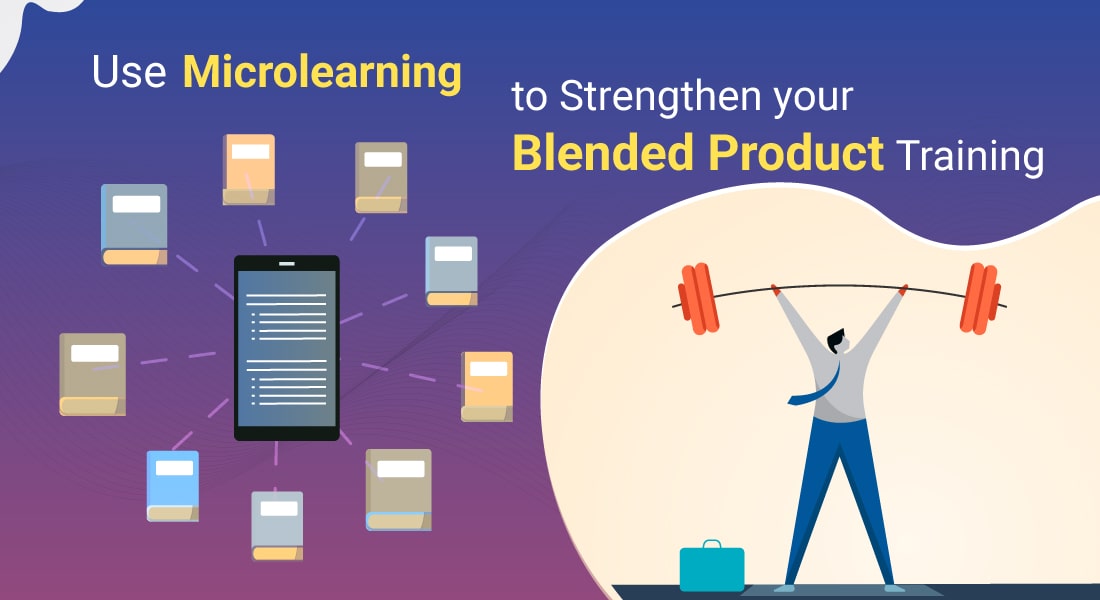Blend Microlearning in Safety Training to Make It Work

Blended learning as we know is a combination of classroom training and online training method. Multiple methods for delivering learning help cater to different learning styles and engage all types of learners. This strategy increases the reach and scope of your training program.
The aim of your training program is to improve the comprehension and performance of your employees. This assumes greater significance in safety training because inadequate safety training can lead to injuries and damage to both life and property. A blended learning program for safety training gives you an array of options when tailoring a safety training course.
In classroom training or an online course, you can introduce case studies to build hypothetical situations where the trainees can safely apply their knowledge on workplace hazards. They can learn how to deal with such hazards without the risk of injury. Videos and animations can be used to visually explain hazards to employees without exposing them to the risk. Demonstrations and practice sessions in the classroom are also important in a safety training program.
Microlearning, as a part of a blended learning strategy can play a significant role in safety training. Employees are put off at the prospect of reading bulky safety manuals or instructions as a part of their safety training, but when it is presented as small nuggets in the form of microlearning modules, they are happy to go through them.
In fact, microlearning can be used at all three different stages of safety training. Microlearning modules are used to create awareness on following safety practices and procedures, for training employees on these topics, and reinforcing training while providing just-in-time support.
How can microlearning be used for safety training?
In the awareness stage, micro modules in the form of videos can make learners aware of the importance of safety. Videos will help learners instantly understand the importance and make them think when they are presented with videos of an actual incident. This will help them get ready for the classroom session where they can discuss why the incident occurred, what could have been done to avoid it, and other aspects to add value to the classroom discussion.
In the training stage, microlearning modules in the form of videos, infographics, or online polls (that solicit learners’ opinions on whether something is a hazard and the best course of action to take under a particular situation) will make the training learner-friendly.
After a classroom training session or online course, microlearning modules can be created on each topic. The single concept approach of microlearning helps break down training topics into multiple microlearning sessions. For instance, a course on using personal protective equipment can be broken down into modules such as when to wear protective gloves, the right way to wear a helmet or footwear.
These modules can explain large and complex information in easily understandable ways to employees. For instance, when instructing employees on how to use a fire extinguisher, an infographic will be effective.
The small size of these modules makes it ideal for reinforcing training and provide performance support at the moment of need. Regular reinforcement is essential if employees have to remember safety practices and procedures while doing their job. Learners can access these modules whenever they have a doubt or need to refresh their knowledge. Suppose an employee is operating a forklift after a long gap and has doubts about its operation, he can instantly access the module on the specific topic on his mobile device (because they can be accessed on multiple devices) even before he operates the forklift.
Why is microlearning successful?
As we are aware, microlearning modules focus on a single learning objective, (with duration of 5-10 minutes), are designed in various formats, and are accessible on smartphones and tablets. Since they teach only one concept at a time, learners are not overwhelmed with trying to learn multiple topics at the same time.
The other advantage is these modules can be delivered to learners just-in-time and just enough as per the learner’s need. The learner too can access these modules based on what he wants to know. This promotes learner autonomy. The various formats suit different learning styles and bring in the desired results for organizations. Moreover, the short modules suit the brief attention spans of today’s millennial workers and their preference to access information anytime, anywhere. A blended learning strategy caters to different learning styles, experience levels, personalities, and preferences and helps achieve high levels of retention. Microlearning as a part of this strategy helps achieve desired results.





